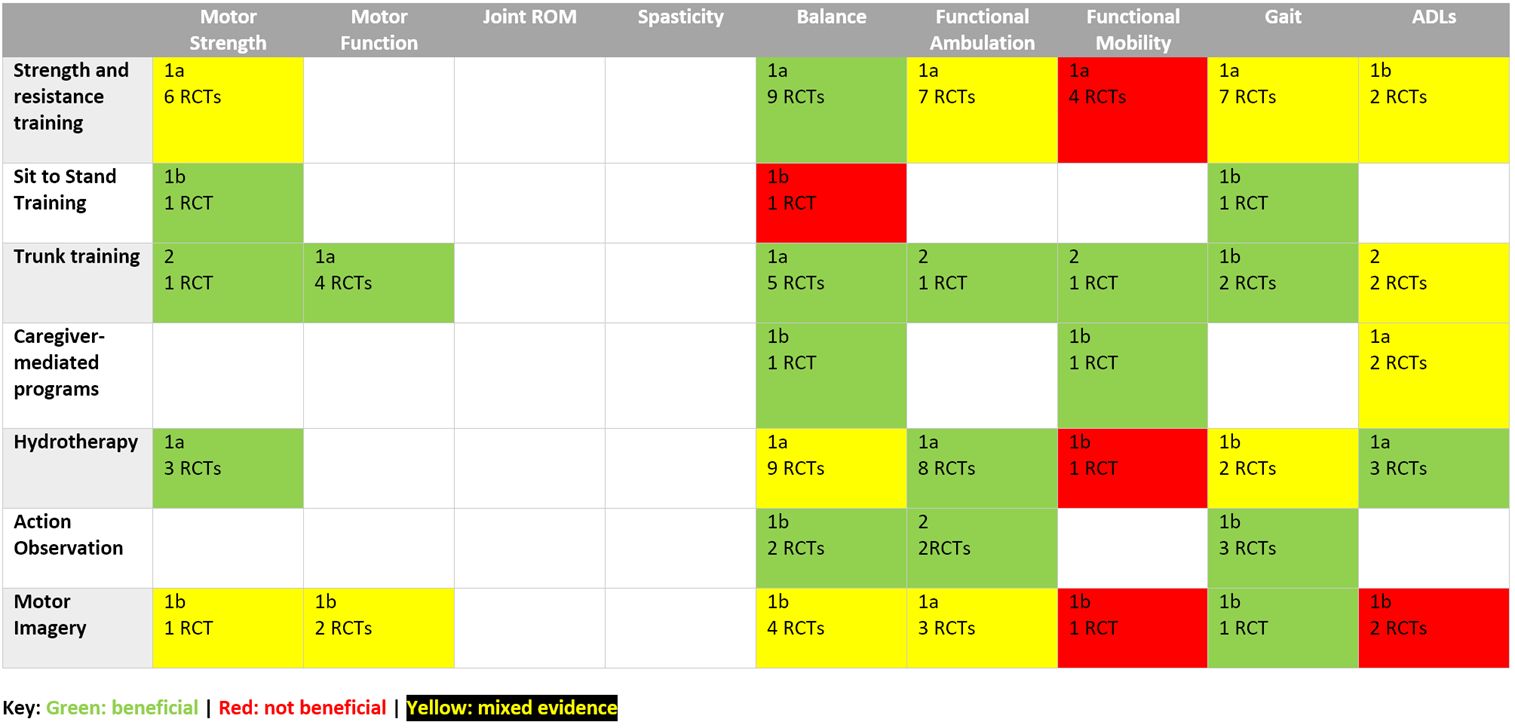STROKE-MOBILITY INTERVENTIONS, THERAPUTIC EXERCISES
SUMMARY
1. American Heart Association (2004) published exercise recommendations which included aerobic exercises as a means to improve sensorimotor function and help with secondary prevention of stroke.
2. Pang et al. recommended that patients engage in aerobic exercise of moderate to high intensity, 20-40 minutes per day, 3-5 days per week, to obtain improvements in aerobic fitness, maximal walking speed, and endurance[1].
3. Strength and resistance training for the lower limbs improves balance but not functional mobility.
4. Standing from a seated position is considered the most frequently performed functional task and is necessary for mobility[2]. Sit-to-stand training may be beneficial for improving gait and muscle strength, but not balance.
5. Trunk impairment is common after stroke and is directly associated with balance and gait[3]. Trunk training may be beneficial for most lower limb rehab outcomes, in particular balance and motor function where the evidence is strong.
6. Caregiver-mediated programs may improve lower limb functional mobility, balance and ADLs.
7. Hydrotherapy has demonstrated benefit in improving motor function during rehabilitation: buoyancy, hydrostatic pressure, hydrodynamic forces, thermodynamics, and viscosity can assist with rehabilitative exercises[4]; may be beneficial for improving functional ambulation, activities of daily living, muscle strength, and proprioception.
8. The literature for hydrotherapy is mixed regarding gait and balance but not mobility or spasticity, although the data is limited.
9. Action Observation (mimicking) has been shown to improve gait and balance and may improve functional ambulation.
10. Motor imagery involves rehearsing a specific task or series of tasks mentally. This in combination with gait/balance training, may improve gait, balance,
functional ambulation and motor function but not functional mobility or ADL.

Reference(s)
- ↑ Pang, M. Y. C., Charlesworth, S. A., Lau, R. W. K., & Chung, R. C. K. (2013b). Using aerobic exercise to improve health outcomes and quality of life in stroke: Evidence-based exercise prescription recommendations. Cerebrovascular Diseases, 35(1), February.
- ↑ Alexander, N., Galecki, A., Nyquist, L., Hofmeyer, M., Grunawalt, J., Grenier, M., & Medell, J. (2000). Chair and bed rise performance in ADL‐impaired congregate housing residents. Journal of the American Geriatrics Society, 48(5), 526-533.
- ↑ Jijimol, G., Fayaz, R., & Vijesh, P. (2013). Correlation of trunk impairment with balance in patients with chronic stroke. NeuroRehabilitation, 32(2), 323-325.
- ↑ Becker, B. E. (2009a). Aquatic therapy: scientific foundations and clinical rehabilitation applications. Pm r, 1(9), 859-872.
Cifu, D.X. (2020). Braddom’s physical medicine and rehabilitation. Elsevier. Get it on Amazon.
Cuccurullo, S. (2019). Physical medicine and rehabilitation board review. New York: Demosmedical. Get it on Amazon.
O’Young, B., Young, M.A. and Stiens, S.A. (2008). Physical Medicine and Rehabilitation Secrets. Mosby. Get it on Amazon.